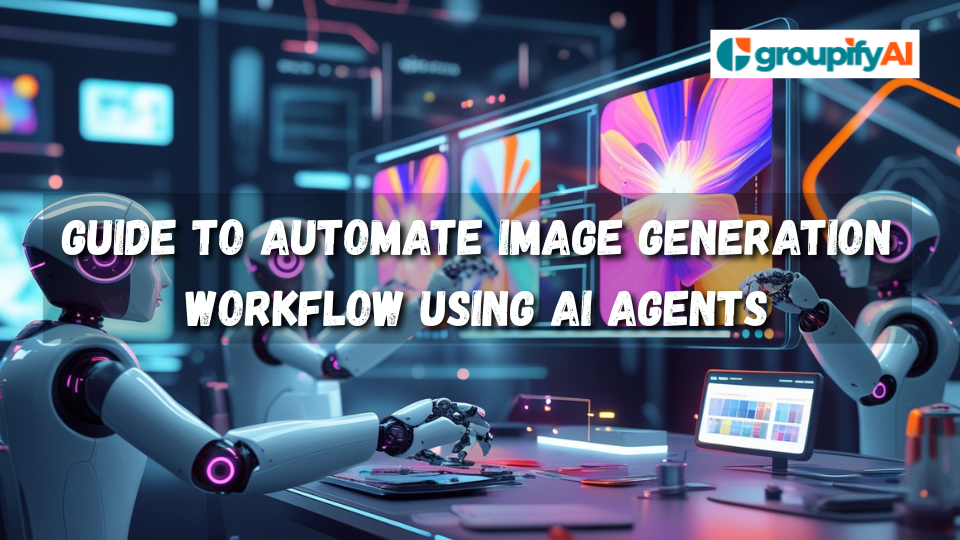How AI Agents Are Automating Entire Teams: A Strategic Guide for Business Leaders
AI agents are no longer an experiment on the IT bench. They are rapidly taking on end-to-end team workflows-customer support queues, month-end close, sales proposal assembly-delivering measurable gains when leaders deploy them with intent. Early adopters report automation of up to 70% of routine tasks in structured processes, and 20-40% cost reductions in targeted departments. The opportunity is real; the risk is trying to wing it.
Executive Hook: Your next productivity surge won’t come from tools-it will come from teams you don’t hire
Every previous automation wave shaved minutes off individual tasks. Agentic AI is different: it stitches tasks into outcomes. Think “digital team members” that understand goals, call the right systems, follow your playbooks, and escalate when needed. The winners over the next 18 months will be the firms that turn agents into operating capacity—safely, measurably, and at scale.
Industry Context: Why this matters now for competitive advantage
Three forces have converged. First, platform providers like Microsoft (Copilot across M365 and Dynamics 365, plus Copilot Studio) and Salesforce (Einstein Copilot and automation flows) have embedded agent capabilities where work already happens. Second, enterprise data access has matured—APIs, event streams, and vectorized knowledge make it feasible for agents to do real work, not demos. Third, labor and speed pressures are acute; compressing cycle times by 30-50% is becoming table stakes in service-heavy industries.

In this context, agents aren’t a nice-to-have experiment. They’re a route to scale without linear headcount growth, and they’re a real moat: once your playbooks become software, competitors copying your surface features won’t catch up quickly.
Core Insight: Agents pay off when you treat them as an operating model change, not a feature
I’ve sat in too many steering committees where “let’s add AI” meant a chat widget. That’s not where the value is. The value comes when you:

- Redesign work around outcomes (e.g., “resolve a ticket,” “close the books”) rather than steps.
- Codify policies as guardrails (policy-as-code) so agents can act with confidence and escalate on exceptions.
- Expose reliable tools—APIs, RPA, documents, and data—as a catalog agents can safely invoke.
- Stand up a supervisory pattern: an orchestrator agent, specialist agents, and a human overseer with clear stop conditions.
Do this, and you move beyond point wins to compounding advantage: faster cycles, fewer errors, and reusable playbooks across the enterprise.
Common Misconceptions: What most companies get wrong
- “Agents will replace the team.” Reality: they absorb repetitive load; humans shift to exceptions, judgment, and relationship work. Expect 40%+ routine task coverage in targeted functions, higher in highly structured flows.
- “Model quality is the bottleneck.” For production value, integration quality and governance matter more than squeezing a few more points of model accuracy.
- “We must fix all our data first.” You need enough high-signal context and well-instrumented tools, not an immaculate data estate. Start where processes are already digitized.
- “Buy one agent and you’re done.” You’ll need a platform strategy (e.g., Microsoft for productivity/ERP, Salesforce for CRM) plus an integration fabric to avoid agent sprawl.
- “Set it and forget it.” Agents drift. Without monitoring, audit trails, and kill switches, small errors cascade into big messes.
Strategic Framework: A.G.E.N.T.S. for enterprise-scale automation
Use this sequence to de-risk adoption while moving fast.
- A — Assess value and viability: Identify 3-5 high-volume workflows with clear SLAs and accessible systems (support triage, invoice matching, sales proposals). Establish baselines for cost, cycle time, error rate, and satisfaction.
- G — Govern from day one: Define policies (what agents can and cannot do), escalation paths, and logging requirements. Create an Agent Risk Review with Legal, Security, and Ops. Treat this like payments or privacy controls.
- E — Engineer the workbench: Provide agents with safe, reliable tools—APIs, RPA bots, knowledge retrieval. Instrument everything. Favor platforms with native integrations (e.g., Microsoft Copilot with Dynamics 365, Salesforce Einstein with CRM) to reduce glue code.
- N — Navigate change: Name a business process owner as the “Agent Product Manager.” Re-scope roles, set new quality bars, and fund upskilling. Communicate that agents remove toil; people move to higher-value work and exception handling.
- T — Track outcomes, not demos: Hard KPIs: cycle time, cost per case, first-contact resolution, exception rate, rework, and agent-to-human escalation rate. Target ROI windows of 6–18 months depending on complexity and scale.
- S — Scale patterns, not pilots: When a pilot clears KPIs, templatize the runbook (tools, prompts, policies, metrics) and replicate to adjacent workflows. Build a shared “Agent Pattern Library.”
Investment, timelines, and where the money goes
- Assessment (1–3 months): Leadership time, discovery sprints, feasibility; light spend, heavy focus.
- Pilot (3–6 months): Platform licenses (e.g., Microsoft Copilot, Salesforce Einstein), integration work, change management. Expect first measurable gains by month three.
- Scale (6–18 months): Deeper system integration, process redesign, training, and governance tooling. This is where the ROI compounds as playbooks are reused.
- Run (ongoing): Monitoring, policy updates, evaluation datasets, and model refresh. Treat as a product with a roadmap.
AgentOps: The operational discipline most organizations forget
Running agents in production requires a muscle you likely don’t have yet:
- Observability: Per-step logging, provenance of data used, and decision traces.
- Safety: Guardrails, sandboxed tool access, rate limits, and role-based permissions.
- Evaluation: Golden datasets and live A/B tests for accuracy, latency, and cost per outcome.
- Recovery: Clear stop conditions, rollbacks, and human-in-the-loop for edge cases.
Without AgentOps, you invite “error cascades” where a small misunderstanding snowballs across systems. With it, you unlock reliable parallelism at scale.

What good looks like: Hallmarks of successful deployments
- Value-first scoping: Start with one outcome that matters (e.g., reduce Tier-1 support backlog by 50%).
- Policy-as-code: Business rules encoded in machine-checkable form, not buried in PDFs.
- Tool catalogs: A curated list of safe, well-documented actions agents can take.
- Human-led governance: Named accountable owners for each agent-run workflow.
- Transparent metrics: Dashboards that business leaders actually use.
Action Steps: What leaders should do Monday morning
- Pick three workflows with high volume and clean system access (one each in support, finance, and sales).
- Appoint an Agent Product Manager in each function with a mandate to deliver outcome KPIs, not demos.
- Standardize on platforms you already own where possible—e.g., Microsoft Copilot for M365/Dynamics 365, Salesforce Einstein for CRM—and define an integration fabric to avoid one-off builds.
- Publish guardrails: What data agents can access, actions they may take, and escalation rules. Include a kill switch.
- Stand up AgentOps: Logging, evaluation datasets, and weekly review of exception cases. Treat exceptions as training data.
- Set hard targets: 30–50% cycle-time reduction, 20–40% cost-down in targeted departments, <10% exception rate after stabilization.
- Invest in people: Fund upskilling and redefine roles so employees move from doing the work to supervising and improving it.
The bottom line
AI agents are not a gadget—they’re a new way to run the business. Treat them as a change in operating model, govern them like critical infrastructure, and measure them by business outcomes. Do that, and you won’t just automate tasks; you’ll create digital teams that scale your company’s ambition.



